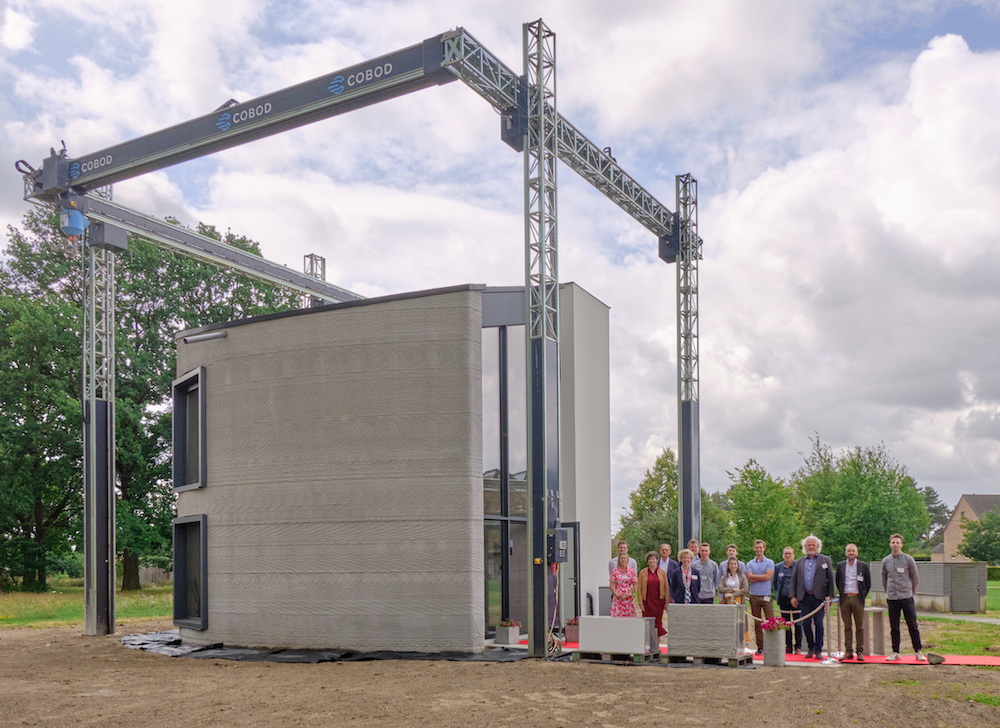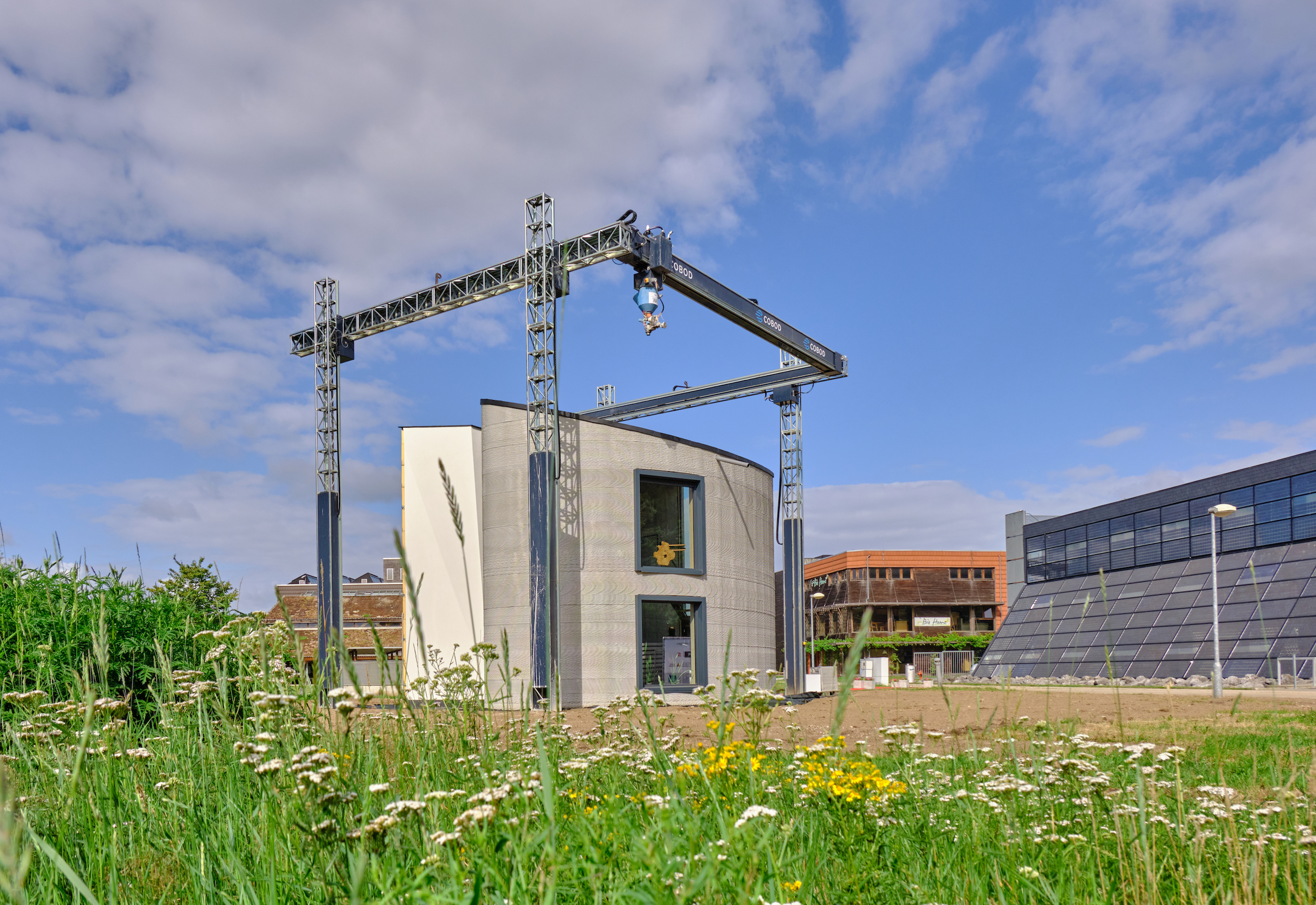The Provincial Centre for Sustainability and Innovation in Construction (better known as Kamp C) in the Belgian municipality of Westerlo has completed work on a two-story model home, measuring just shy of 970 square feet, that was produced as a single piece by a fixed 3D printer—a world’s first. The concrete printer in question is also Europe’s largest.
Per a press release distributed by the Province of Antwerp, the concrete demo abode is roughly the same size as other single-family terrace residences in the region and roughly three times sturdier than typical brick construction. The entire printing process, which was spread out over the span of three weeks but could potentially be accomplished in two days as the technology progresses, offered savings of up to sixty percent in the realm of materials, time, and budget.
“What makes this house so unique, is that we printed it with a fixed 3D concrete printer,” said Emiel Ascione, project manager at Kamp C. “Other houses that were printed around the world only have one floor. In many cases, the components were printed in a factory and were assembled on-site. We, however, printed the entire building envelope in one piece on-site.”
The first-of-its-kind home will remain at Kamp C, which functions as an autonomous provincial company of Antwerp and is located on the grounds of an old British military transit facility, where it will be open to the public through September (via scheduled appointments) as a “showcase” for emerging 3D printing technology.
“When we started to build it, we had no idea which use the building would have,” explained Kamp C architect Piet Wielemans. “Our aim was to print the floor area, height, and shape of an average contemporary home, in the form of a model home with multipurpose options. This is a principle of circular building. The building can be used as a house, a meeting space, an office, or an exhibition space.”

The conception and printing of the structure were executed with the support of over $755,000 in grant funding furnished by the European Regional Development Fund (ERDF)’s European C3PO Project, which, per the Province of Antwerp, “aims to accelerate the transition to this innovative technology in Flanders.” Eight project partners, including educational institutions, material suppliers, and architecture firms, also helped to bring the project, first announced in the spring of last year, to fruition.
Said Kathleen Helsen, the Provincial Deputy for Housing and president of Kamp C, in a statement:
“The building industry has expressed plenty of interest. 3D printing in construction is experiencing an uptick around the world. Several possibilities, including the printing of provisional housing and even complete apartments, are already being implemented, but this technology is still very novel in Flanders. At the same time, the construction industry is facing unprecedented challenges: we must reduce our consumption of materials and energy, reduce CO2 emissions and the waste stream, the demand for high-quality and affordable housing is on the rise, and so on. At Kamp C, we believe that new technologies, such as 3D concrete printing, can help provide a response. That is why we created this unique location on our site, where construction companies can experiment with 3D printing, together with research and education institutions.”
It’s too early to tell if the Flemish construction industry will warm to the use of 3D printing technology in residential building and other applications although it has garnered an international reputation for embracing circular, low-waste methods. To the north of Belgium in the Netherlands, state-of-the-art 3D printers are being used to build bridges and, potentially, entire neighborhoods.
